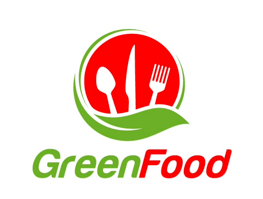
How PPE and Sanitation SKU Consolidation Cut Costs & Improved Efficiency

Industry
Food Manufacturing
Challenge
Fresh Cut Processor had way too many different PPE and sanitation products, making it hard to track what was being used and driving up costs unnecessarily.
Results
By eliminating redundant products, the client reduced its product lineup by 82% without compromising safety, saving 20% annually and making operations significantly smoother.
PPE and Sanitation
PPE, Paper & Dispensers, Soap & Sanitizer

About your Customer
A fresh-cut processor had too many different PPE and sanitation products, which were causing problems and wasting money. We helped them reduce their product list during the RFP process. The client achieved an 82% SKU reduction while maintaining safety standards and capturing 20% annual cost savings.The Challenge
The client encountered multiple operational challenges stemming from excessive product variety:
- SKU Proliferation: Too many redundant SKUs across PPE and sanitation categories created unnecessary complexity
- Operational Inefficiencies: Poor usage tracking and procurement complications due to product variety
- Financial Impact: Excess spending driven by inefficient product selection and inventory management
- User Confusion: Multiple similar products led to inconsistent usage and training challenges
The Solution
Through strategic product consolidation during the RFP process to implement a comprehensive SKU consolidation strategy:
Product Analysis & Testing
- Conducted thorough analysis of existing product usage patterns
- Performed systematic testing of SKU variations across categories
- Evaluated products based on three key criteria:
- Durability performance
- Safety compliance and effectiveness
- User adoption rates
Standardization Process
- Identified best-performing options in each category
- Developed standardization recommendations based on testing results
- Ensured selections maintained or improved safety and compliance standards
The Results
By cutting out redundant products, the client reduced their product lineup by 82% without compromising safety, saving 20% annually and making operations much smoother.
Breakdown
Outcomes
- 82% SKU reduction across multiple product categories
- 20% annual cost savings across all specific categories
- Maintained 100% safety and compliance standards
Improvements
- Enhanced Product Usage: Clearer training protocols
- Better Fit-for-Purpose Selection: More appropriate product matching to specific use cases
- Reduced User Confusion: Streamlined product options
- Improved Training Efficiency: Fewer products to train on reduced complications
Financial Impact
Savings
- 20% annual cost reduction across evaluated categories
- Reduced procurement complexity and administrative costs
- Decreased inventory carrying costs
- Training time reduction
Improvements
- Improved compliance consistency verified through user feedback
- Enhanced product usage patterns confirmed via repeat order analysis
- Streamlined procurement processes with reduced vendor management complexity
Organizational Impact
The SKU consolidation initiative delivered benefits beyond immediate cost savings:
Operational Excellence
- Established a new baseline for future purchasing decisions across all sites
- Created a methodology for ongoing product evaluation
- Improved procurement efficiency.
This strategic SKU consolidation project demonstrates how product analysis and testing can deliver significant operational and financial benefits. By partnering during the RFP process and focusing on data-driven decision making, the client achieved substantial cost savings while improving operational efficiency and maintaining rigorous safety standards.
This success has helped the company improve how it buys products and gives them a clear process for managing different product categories going forward.



